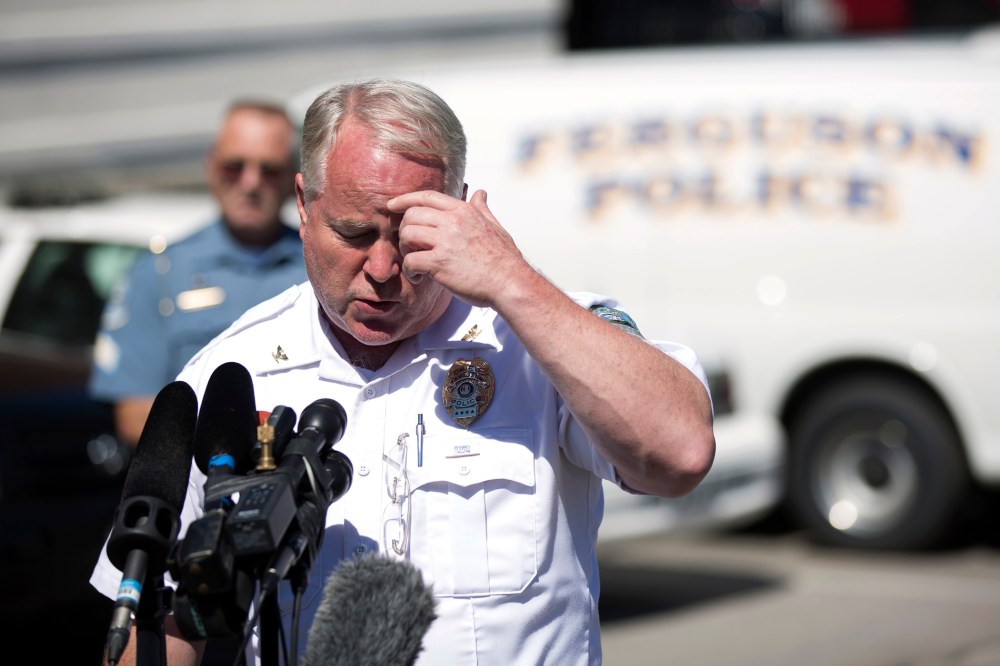A police chief slips out the back door. Officers dress in military fatigues and fire tear gas and rubber bullets at peaceful protesters. Authorities can’t seem to get their story straight.

Since the moment a Ferguson, Missouri cop shot and killed 18-year-old Michael Brown last weekend, the local police department’s response has been defined by its ability to make a bad situation worse.
Just hours after it seemed like Ferguson had turned a corner, the police department provoked fresh outrage Friday after releasing a series of conflicting statements on the events leading up to Brown’s death, transforming a day that was supposed to provide answers to grieving residents into a renewed period of unrest.
In a brief press conference Friday morning, a visibly uncomfortable Ferguson Police Chief Thomas Jackson finally released the name of the officer who shot Brown, Darren Wilson, a detail residents had demanded since the teen’s death. But instead of shedding new light on the police shooting, authorities released a police report and video surveillance footage alleging Brown had stolen cigars from a convenience store shortly before his fatal run-in with Wilson. Jackson declined to answer questions from reporters.
The police chief was also noticeably absent from a press conference Saturday during which Gov. Jay Nixon declared a state of emergency and imposed a curfew in Ferguson.
The allegations Friday threw a new wrench into the case. The report claimed that Wilson was responding to a police dispatch description of a suspect in a robbery. But later in the day, at another confusing press conference, Jackson revealed that Wilson didn’t know the teen was a suspect in the robbery.
“The police officer stopped the victim because the victim was walking in the middle of the street,” Jackson said.
That revelation led reporters to ask Johnson why the police report and surveillance footage were released if the alleged robbery had nothing to do with Brown being stopped.
“Because you asked for it,” Jackson said of the media.
But the police chief walked back that claim later Friday afternoon, telling the St. Louis Post-Dispatch that Wilson was aware of a robbery nearby and that the officer realized Brown might have been a suspect when he saw cigars in the teen’s hands.
Federal authorities opposed the release of the surveillance footage, a law enforcement official close to the investigation told NBC News. Federal authorities had a copy of the tape, and it was released by the Ferguson Police Department at the objection of the feds, the official said.
The release of the police report and surveillance footage appeared to irk Missouri State Highway Patrol Capt. Ron Johnson, who was tasked Thursday with overseeing security in Ferguson after days of aggressive police tactics in response to growing unrest. Jackson didn’t give Johnson notice that the footage would be released, and Johnson said he first saw the images Friday morning on the news.
“I’m going to talk to the chief later about inclusion in some of these press conferences. We probably could have said some things differently at that press conference and maybe given out some information in a different way,” Johnson told reporters Friday.
Jackson’s statement Friday and the release of the police report and surveillance footage raised more questions than it answered. But the police department’s poor performance was evident long before Friday’s developments.
Authorities still haven’t released official details of the shooting, despite residents and reporters asking for an explanation. The U.S. attorney’s office and the FBI have taken the lead in investigating the shooting after local police handed over the case.











